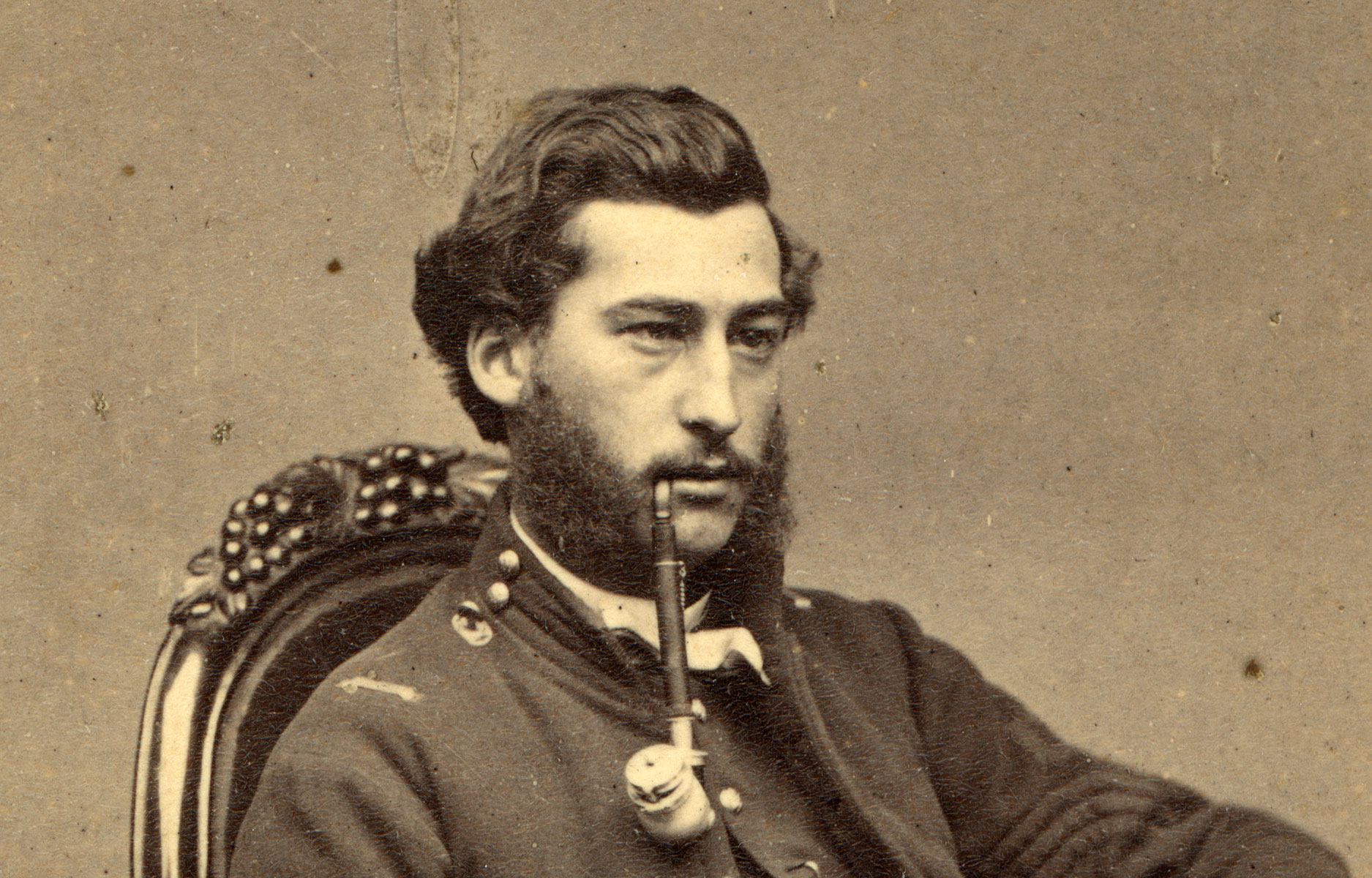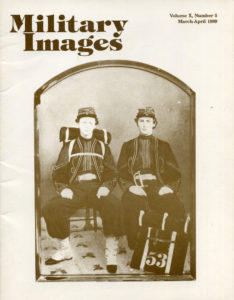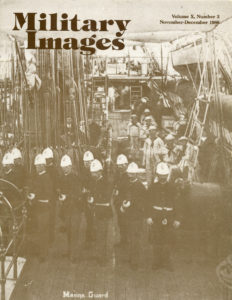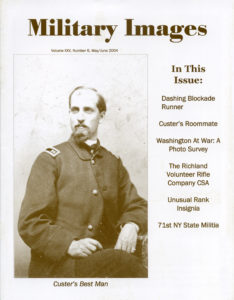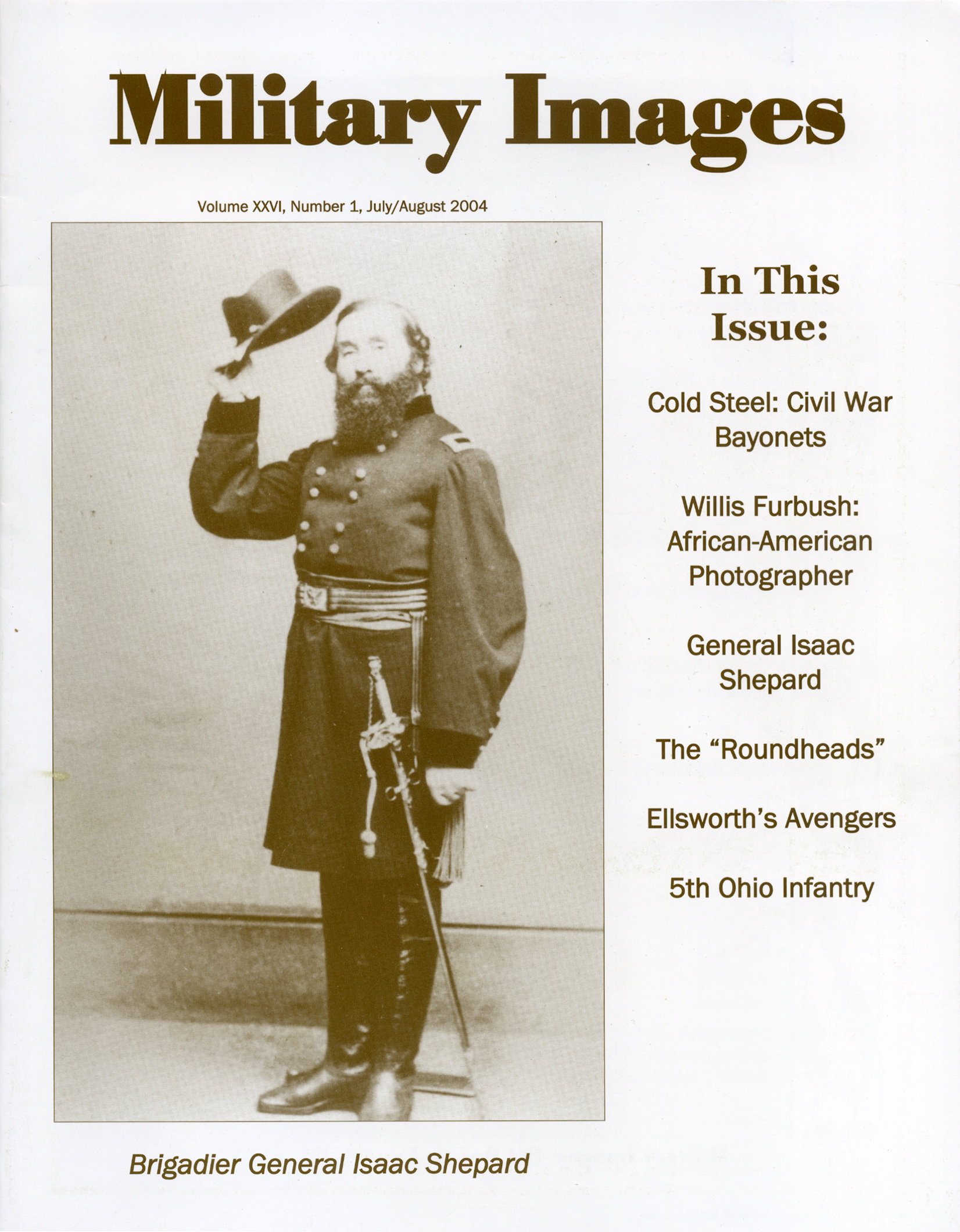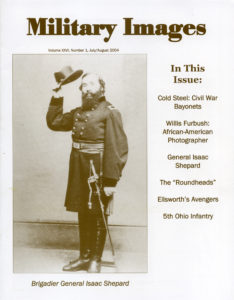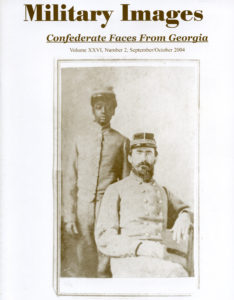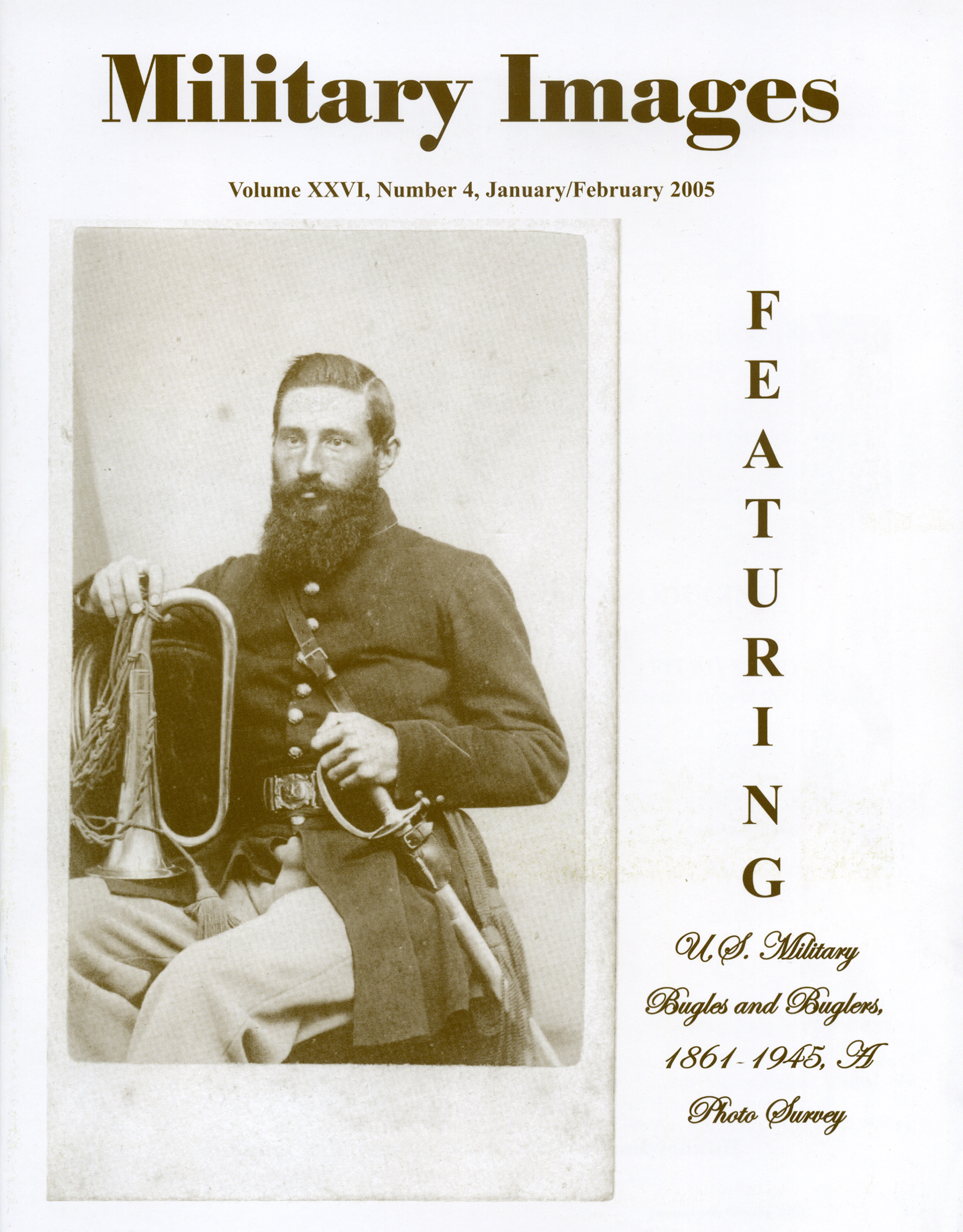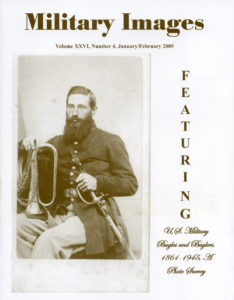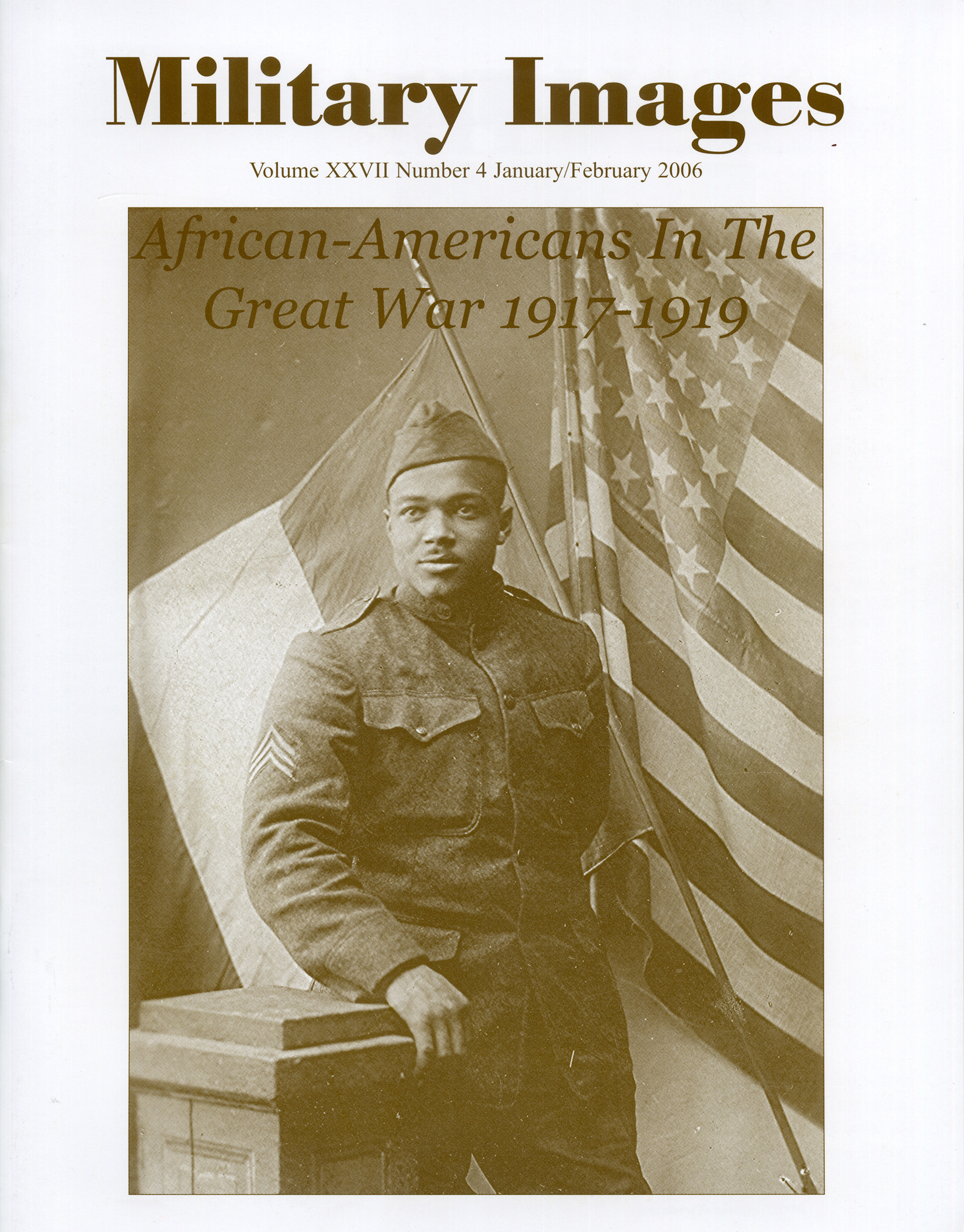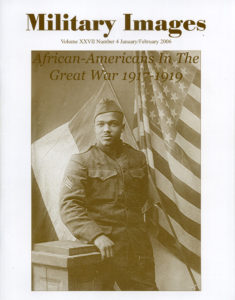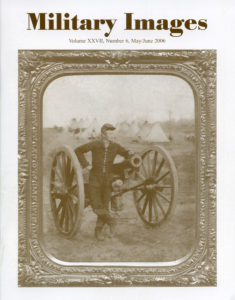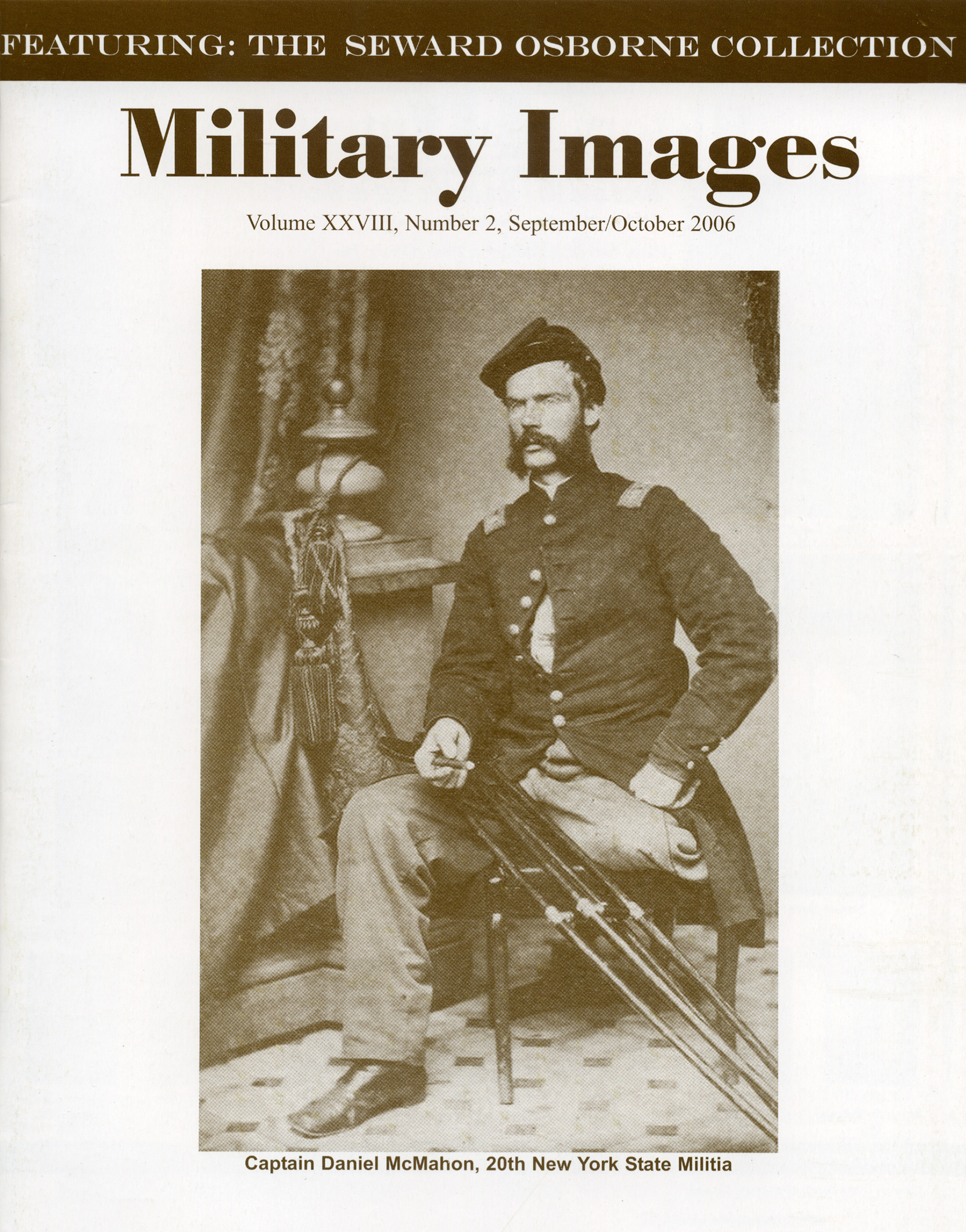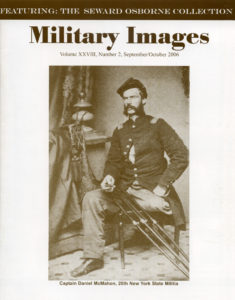The complete issue
Vol. X, No. 5
(32 pages)
Print edition: Visit our store to check availability
Digital edition: Visit JSTOR.org to purchase
Subscribe to MI
Explore the MI Archives: Browse | Advanced search | Tutorial
Inside
Cover image
A full-plate albumen photograph from the David Mark collection pictures two corporals of the Maryland Guard Battalion, John Eager Howard of the 1st Infantry and the 1st Cavalry, and Charles R. Thompson of the 1st Cavalry.
Editor’s Desk (p. 1)
The editor notes that this is the very first issue dedicated to a single state—Maryland Troops in the Confederate Army. It is also the third issue dedicated to one man’s collection. (Ronn Palm had the honor of being first in 1987 and Mike McAfee in 1988.)
Mail Call (p. 2)
The letters to the editor include a plea for “More sex!” This is a reference to the gallery Risque Business in the last issue. Another letter describes how someone is forging signatures on cartes de visite and selling them at Civil War shows.
Passing in Review (p. 3)
The issue features reviews of 3 publications, including Winfield Scott Hancock, A Soldier’s Life (Indiana University Press) by David M. Jordan; Cry Comanche (The Hill College Press) by Col. Harold B. Simpson and Gettysburg, videotape of the 1988 battle reenactment (Classic Videos).
Vis-à-vis: Dave Mark (p. 4)
An interview in a question and answer format explores the background and interests of the featured collector of this issue.
Maryland Troops in the Confederate Army (p. 5)
This introduction to the David Mark collection is an overview of Maryland’s participation in the Civil War, which includes a roster of all the Confederate units.
Maryland General Officers (pp. 6-8)
The officers include Brig. Gen. Bradley T. Johnson, Brig. Gen. John Henry Winder, Brig. Gen. George Hume “Maryland” Steuart, Brig. Gen. James Jay Archer, Brig. Gen. Arnold Elzey, Maj. Gen. Mansfield Lovell and Brig. Gen. Lloyd Tilghman.
Maryland Naval Officers (pp. 9-11)
The officers include Adm. Franklin Buchanan, Cmdr. James Iredell Waddell, John W. Bennett, Comm. George N. Hollins Sr. and Rear Adm. Raphael Semmes.
Maryland Staff Officers (pp. 12-13)
The officers include Lt. Col. Osmun Latrobe, who served on the staffs of Joseph E. Johnston, David Jones and James Longstreet; Capt. McHenry Howard, who served on the staffs of Charles Winder, “Maryland” Steuert and George Washington Custis Lee; Col. William Norris, Chief of the Confederate Signal Corps and later Chief of the Secret Service Bureau; Maj. Frederick Gustavus Skinner of the 1st Virginia Infantry, Lt. Col. Edward Murray of the 49th Virginia Infantry, who also served as assistant adjutant general to Robert E. Lee and Maj. Henry Kyd Douglas, who served on the staffs of Thomas J. “Stonewall” Jackson, Edward Johnson and John B. Gordon.
Maryland Artillerymen (pp. 14-15)
The soldiers include Capt. Frederick M. Colston of the Army of Northern Virginia, Lt. Col. Llewellyn Griffith Hoxton of William J. Hardee’s Corps, Capt. William L. Ritter of the 3rd Maryland Battery, Maj. James Breathed of J.E.B. Stuart’s cavalry corps, Pvt. George Addison Cook of Dement’s Battery, 1st Maryland Artillery, Capt. William Hunter Griffin of the 2nd Maryland “Baltimore Light” Battery and Lt. Henry Clay Hewitt of Otey’s Battery.
The Maryland Guard Battalion (pp. 16-19)
Identified soldiers include Dewitt Clinton Rench, Charles P. Stewart, John Hudson Snowden, William H. Murray, McHenry Howard, Robert G. Harper Carroll and George P. Kane.
Maryland Infantrymen (pp. 20-22)
Identified soldiers include Capt. William Henry Murray of the 1st and 2nd infantries, Pvt. Alexander Murray of the 2nd Infantry, Maj. William Worthington Goldsborough of the 2nd Infantry, Sgt. Charles R. Favour of the 12th and 13th Virginia infantries, Lt. William Zollinger of the 1st and 2nd infantries, Capt. James Thomas Bussey of the 2nd Infantry, Pvt. William H. Ryan of the 1st Infantry and 2nd Cavalry Battalion, Pvt. Robert Scott Young of the 8th Virginia Infantry and Pvt. John Alexander Hayden of the 2nd Infantry.
Maryland Cavalrymen (pp. 23-27)
Identified soldiers include Pvt. Thaddeus Clary of the 11th Virginia Cavalry and McNeill’s Rangers; Pvt. John B. Williamson of McNeill’s Rangers and the 2nd Cavalry Battalion; Capt. William I. Rasin of the 1st Clary (he led the final cavalry charge at Appomattox); Lt. Col. Harry W. Gilmor of the 7th Virginia Cavalry, 12th Virginia Cavalry and 2nd Cavalry; Lt. Col. Elijah Viers White of the 7th Virginia Cavalry, White’s Rebels and the 35th Virginia Cavalry Battalion; James L. Clark of the 1st Infantry, 12th Virginia Cavalry and 2nd Cavalry; Capt. Jesse Brandenburg of the 2nd Cavalry Battalion; Lt. Edward Beatty of the 1st Cavalry; James W. Jenkins Jr. of the 1st Cavalry; Capt. Nathan Chew Hobbs of the 1st Virginia Cavalry, Pvt. Thomas P. Williams of the 1st Cavalry; Pvt. Daniel Giraud Wright of the 1st Infantry and Mosby’s guerillas; Cpl. Elijah Bishop of the 25th Virginia Cavalry; Lt. William H.B. Dorsey of the 1st Infantry and 1st Cavalry and Capt. George Ridgeley Gaither of the 1st Virginia Cavalry.
Stragglers (pp. 28-29)
Six images from the David Mark collection are unidentified Confederate soldiers who may have hailed from Maryland or served in Maryland military organizations.
Sutler’s Row (p. 32)
Back cover
A carte de visite from the David Mark collection pictures two Maryland Confederates, James McHenry Howard of the 1st Infantry and Pelham’s Battery of Stuart’s Horse Artillery, and his brother David Ridgely Howard of the 2nd Infantry.
